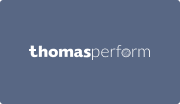The British pop group Take That once sang that “Everything changes”, and as I look around this post-pandemic world, you cannot argue with Gary Barlow and the boys. Your business has almost certainly changed – ours did! Your customers will have changed, the global economy definitely has, and your people will have changed as well, especially if they are now working remotely or as part of a hybrid team.
Everything changes
People’s behavioural and communication preferences don’t remain static – they change as a result of alterations to their environment, their work life, their home life, even to a lesser extent as a result of the seasons. We’ve seen individuals within our business that sat quietly at the back of meeting rooms and rarely raised their hand or spoke up change almost overnight when working remotely to become much more outgoing. They felt more comfortable asking a question or making an observation over video, than in an in-person environment. We’ve seen others who had previously been extroverts become withdrawn and struggle to cope with the lack of people contact that remote working introduced. These changes impact not just the individual, but also those around them.
As businesses around the world now start to reopen and teams reform, many continue to work in a hybrid manner – with some team members coming into the office, and others working remotely. Team dynamics are a delicate thing, and changes like this can make a huge difference to the collaboration, communication and creativity of teams. These often begin as a vague feeling that something’s not quite right, but you can’t really identify what it is. Left unchecked, this can rapidly spiral into a lack of productivity, dysfunctional team relationships and interpersonal conflict that can very quickly bring a team to its figurative knees.
How can you build and develop a high-performing team?
1. Communication, communication, communication
Communication is one of the main characteristics of high-performing teams. It is something we all take for granted and a lack of understanding of how to effectively communicate as a team can cost businesses excessive amounts of time and money every year. When managing high performance teams, make sure there is a focus on fostering clear team communication, it will lead to improvements in employee motivation, productivity and profitability.
There are many barriers to effective communication, ranging from not listening, making assumptions, conflicting messages, perceptions and emotional distractions - to remove and/or limit their impact will be the first step to building a high performing agile team. These barriers can become even more pronounced when members of the team are working remotely.
Teams which communicate, understand what needs to be achieved and allows the individuals within it to support or challenge each other in equal measure. This allows a nurturing culture to develop where everyone will look out for one another and make allowances for mistakes. Constructive challenge allows individual and team growth. Agility and change ensures that projects don’t stagnate and the environment becomes one which is flexible, creative and passionate.
Are you more of a teller, a talker, a listener or a writer? Understanding both the preferred communication style of yourself and others will instantly drive effective communication. You will then be able to modify your behaviour to that of other people to get the best reaction from them, and vice versa, ensuring clarity, trust and respect are present.
2. Know where you are and where you want to be
To take your team to the next level, it’s imperative to understand the inner dynamics of how you all work together. Can you answer the following questions about your team?
- Do you know the strengths of the team so you can maintain them?
- What are the team’s limitations?
- What is the role of each person in the team?
- How will theis team react to change?
- Where is there potential conflict in the team?
Completing a team audit based on the Thomas Behaviour assessment will provide clarity around where your team stands, not only as a unit working together but also in the wider business. It will inspire the team to achieve more, pinpoint training needs and identify skill gaps that can be filled through up-skilling and recruitment.
3. Make sense of emotional intelligence
Emotional intelligence (EI) is a powerful driver in effective team working that, if mastered correctly, can transform understanding of the team's ‘DNA’.
The concept of EI can be summarised as “the capacity to harmonise thought and emotion”, by which we mean an individual’s ability to understand and control their own emotions, as well as recognise and manage those of others. This requires a person to be self-aware, perceptive and able to regulate emotional responses in various situations.
If a team can consistently utilise the insight given by EI, they will naturally foster an attitude of loyalty and engagement, communicate effectively and can fine-tune their team-working skills to push for further success.
4. The foundation of any successful team is trust
A successful team has trust at its foundation. Without trust, teams cannot move forwards due to fear of conflict and a lack of commitment. Establishing trust between team members can take a team from a satisfactory level of performance to an outstanding set of results.
Being open and honest about strengths and limitations in our workplace behaviours can generate trust between team members. An understanding of our own personality traits can illustrate how and why we behave the way we do and how we interact with other people and then make behavioural modifications if necessary.
5. Feedback is a gift!
360 feedback is a peer-analysis approach to giving constructive and honest feedback, which provides your business with an objective framework for identifying performance gaps and developing self-awareness. It enables teams to gather performance feedback from their managers, colleagues, team members and customers and then compare this feedback with their own perception of their performance.
This style of feedback is essential in helping teams to recognise how their behaviour is perceived across the business. Is the team dynamic working? Or is it having a negative impact on the perception of the team across the business?
By opening your team up to feedback from others, you will receive essential feedback and recommendations that could help you to take your team from good to great. When used regularly throughout a development plan, this powerful tool can help you to track progress made and quickly adjust course if required.
6. Now let's maintain it
Once you've set the foundations - maintain them! A collective commitment to making individual and team improvements, that enhance performance and capitalise on strengths, will ensure your team is constantly working together as effectively and efficiently as possible. Re-visit these commitments as often as you need to. As situations and targets change, update and reconsider what your team needs to do to keep the momentum going.
When team members work well together, there is little they cannot accomplish. Make sure you're looking at the bigger picture when it comes to your teams and increase your chances of developing and sustaining high performance work teams.
For more information on developing high performing teams, speak to your account manager today. Thomas can help you to see your teams, and the individuals comprising them more clearly, thereby enabling the building or reforming of collaborative, productive teams in the hybrid world we find ourselves in today.



